Indoor plants require special care, and part of that care involves fertilization. What is the best NPK ratio for indoor plants? That’s a common question many plant owners have. NPK stands for Nitrogen (N), Phosphorus (P), and Potassium (K), the essential nutrients for plant growth. Fertilizer N-P-K ratio varies depending on the type of plants you have and what stage of growth they’re in.
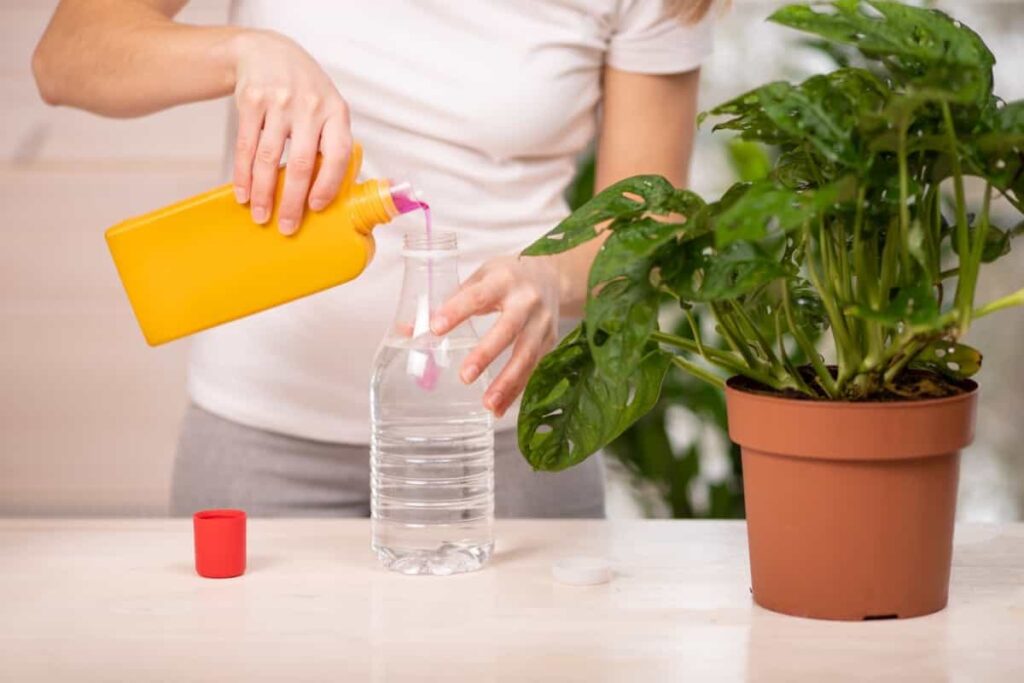
The NPK ratio for natural fertilizer, as well as in liquid fertilizer, differs from commercial options. How do you use NPK fertilizer for indoor plants? A free fertilizer schedule chart for indoor plants can be a handy guide. Homemade fertilizer for indoor plants, organic options, and natural alternatives can be effective, especially for those who prefer a more eco-friendly route.
The ideal indoor plant fertilizer varies with your plants’ unique requirements, which can shift with the seasons. Whether it’s figuring out what month to start fertilizing indoor plants or how to fertilize indoor plants naturally, we’ve got you covered. In this article, we will discuss fertilizing indoor plants in winter, spring, summer, and fall to ensure your green friends are healthy all year round.
Best Homemade Fertilizers for Indoor Plants
Compost tea is a nutrient-rich liquid made from steeping compost in water. It’s an excellent source of micro and macro nutrients, including a balanced N-P-K ratio for plants. Simply dilute and water your plants as usual. Worm castings, another great option, are rich in organic matter and offer a gentle yet effective N-P-K ratio in organic fertilizer. To use, just sprinkle the castings on the soil surface.
In case you missed it: Plant Spacing Chart for Vegetables, Fruits, Flowers, Herbs and Calculate Ideal Plant Spacing
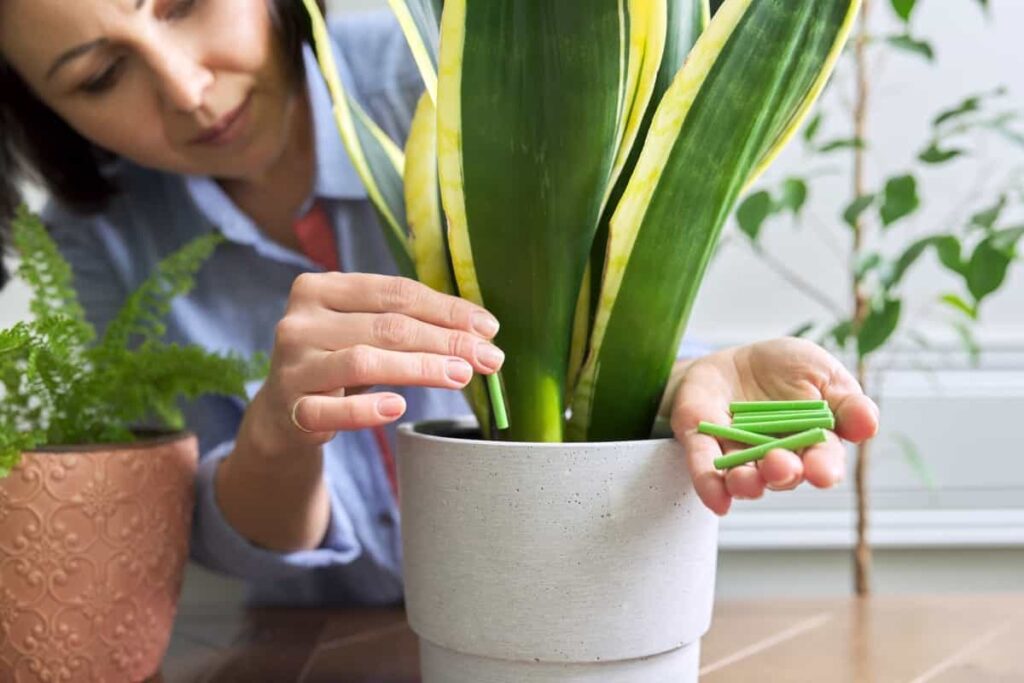
Fish emulsion is another potent homemade fertilizer. It’s high in nitrogen and offers a good balance of nutrients. To apply, dilute with water and use as a soil soak. Last but not least, Bokashi fertilizer is made through an anaerobic fermentation process and is rich in nutrients. Spread the finished Bokashi at the base of your plants and lightly incorporate it into the soil.
Best Fertilizers for Specific Indoor Plants
An organic, slow-release fertilizer with a lower N-P-K ratio works best for ferns. The focus should be on providing consistent but moderate nutrition over time. For succulents and cacti, a balanced N-P-K ratio is important. These plants prefer a diluted fertilizer, which should be applied sparingly to avoid root burn.
Orchids require a specialized approach. Use a balanced liquid fertilizer with an even N-P-K ratio. This is especially important during their active growth phase in spring and summer. Fertilizing indoor plants in the fall should be minimized, especially for orchids, as they prepare for dormancy.
Fertilizer Ratios for Indoor Plants
When it comes to indoor plants, choosing the right fertilizer ratio is crucial for optimal growth and health. A balanced NPK ratio of 10-10-10 (nitrogen-phosphorus-potassium) is often recommended for general indoor plant care as it provides equal parts of each essential nutrient.
Beyond the NPK ratio, other important factors include the Cation Exchange Capacity (CEC), which measures the soil’s ability to hold onto essential nutrients; a range of 10-20 meq/100g is ideal for indoor plants. The soil pH level also plays a vital role in nutrient absorption, with a slightly acidic range of 5.5-6.5 being generally suitable for most indoor plants. All these factors—NPK ratio, CEC, and pH level—work in tandem to create a nurturing environment for your indoor plants.
Fertilizer Application for Indoor Plants
Correctly applying fertilizer is just as important as choosing the right type. Frequency matters; for most indoor plants, a once-a-month application is sufficient. To prevent harming your plants, make sure to heed the manufacturer’s dosage guidelines to prevent excessive fertilization and nutrient imbalances.
There are various methods to apply fertilizer to your indoor plants, including using a watering can for liquid fertilizers, a spray bottle for foliar feeding, or a fertilizer injector for a more precise application. Every approach has its advantages, so pick the one that aligns with your plant’s requirements and your ease. To make sure your indoor plants thrive with strong growth and colorful blooms, pay close attention to the fertilizer type and how you apply it.
Benefits of Using Fertilizers for Indoor Plants
Utilizing the appropriate fertilizers for your indoor plants has many benefits. Chief among these is promoting healthy growth and development, as fertilizers provide essential nutrients that might be missing from your regular potting soil. A contented plant, well-nourished and thriving, not only grows vigorously but also yields more blossoms and fruits. Beyond this, the right fertilizers can also significantly enhance the color and texture of the foliage and the blooms, making your indoor garden healthier and more aesthetically pleasing.
Additionally, fertilizers are not just good for the plant but also for the soil itself. They can improve soil structure, making it more aerated and thereby enabling better water retention and drainage and boosting its fertility by replenishing essential nutrients. Using fertilizers can transform your indoor garden, making your plants healthier and more vibrant.
Potential Risks of Over-Fertilizing Indoor Plants
While fertilizers offer many benefits, it’s important to be aware of the potential downsides of over-fertilizing. One of the most immediate risks is the burning of roots and leaves resulting from nutrient overload. This can weaken the plant and, in extreme cases, even kill it. Additionally, applying too much fertilizer can lead to a nutrient imbalance in the soil. While plants need a range of nutrients to thrive, an excess of one can lead to a deficiency of another, disrupting the delicate nutrient balance required for optimal growth.
In case you missed it: Vegetable Planting Chart for London: Month-Wise Growing Calendar for Different Seasons
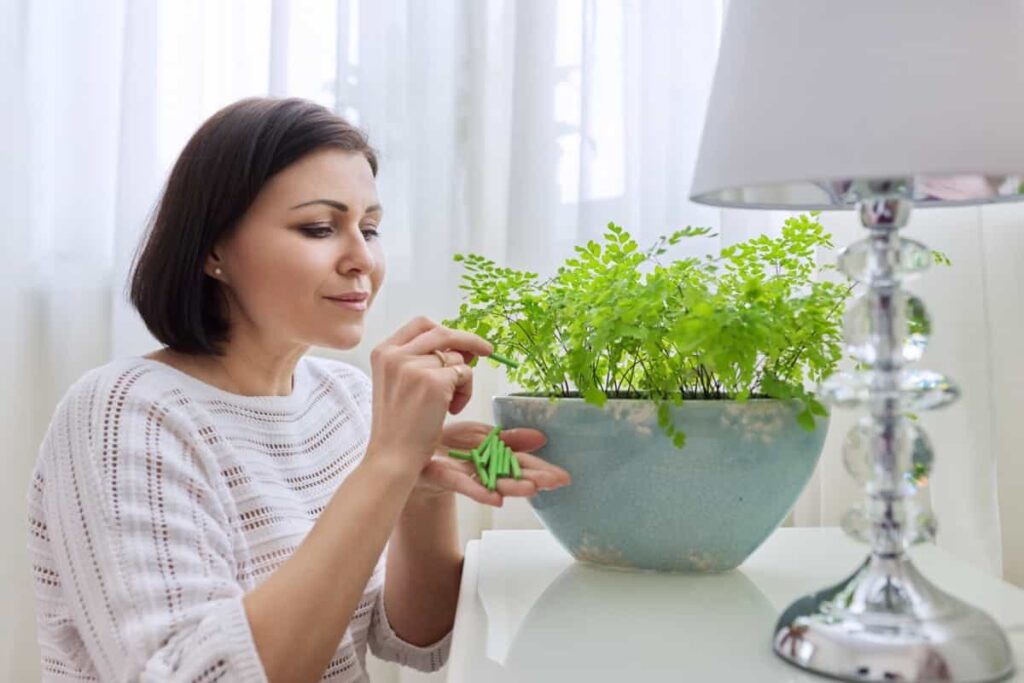
Over-fertilizing can also result in waterlogged soil, severely hampers its drainage capabilities. Poor drainage, in turn, creates a breeding ground for root rot and other diseases. Furthermore, plants weakened by excessive fertilization are more susceptible to pest infestations and diseases. Hence, while fertilizers are essential for plant health, moderation, and careful application are key to avoiding these potential risks.
How to Choose the Right Fertilizer for Your Indoor Plants
Choosing the right fertilizer for indoor plants is critical in ensuring their health and longevity. Start by considering the specific species of plant you’re dealing with, as different plants have unique nutrient needs. Once you’ve established this, check the soil pH and CEC (Cation Exchange Capacity) levels, as these factors will influence the effectiveness of the fertilizer you choose. Opting for fertilizers with organic and natural ingredients is often a safer and more eco-friendly choice.
These tend to be gentler on the plants and offer a balanced range of nutrients. To further guide your decision, read reviews of different fertilizers or consult a local nursery or gardening expert. They provide custom guidance tailored to your indoor garden’s unique needs, drawing from their expertise and experience. Considering these factors, you’ll be well-equipped to select a fertilizer that’s perfect for your indoor plants.
Fertilizer Maintenance Schedule for Indoor Plants
Maintaining a consistent fertilizer schedule is crucial for indoor plants’ overall well-being. In the spring, as plants emerge from their winter dormancy and enter a period of rapid growth, a once-a-month application is generally adequate. During the summer, plants are most active and may benefit from more frequent fertilization, ideally every 2-3 weeks. Come fall, as the growth rate starts to slow, revert to a once-a-month schedule.
In the winter, your plants will be in a less active growth phase, so it’s advisable to reduce the frequency of fertilization to every 4-6 weeks. This schedule serves as a general guideline, but always pay attention to the specific needs of your plants, as some may require adjustments based on their growth patterns and nutritional needs. Following a season-appropriate fertilization schedule can keep your indoor plants healthy and thriving throughout the year.
Signs of Fertilizer Deficiency in Indoor Plants
Recognizing the symptoms of fertilizer deficiency in your indoor plants can help you take timely action to correct the issue. Yellowing leaves are among the most common signs of nutrient deficiency, often indicating a lack of nitrogen. Stunted growth is another symptom suggesting your plants are not getting the proper nutrients they need.
If your plants are growing at a noticeably slow rate, this could also indicate a deficiency in essential nutrients like phosphorus or potassium. Leaf drop is another sign that your plants may struggle due to inadequate fertilization. Any of these symptoms should prompt you to examine your fertilization routine and make the necessary adjustments to ensure your indoor plants receive the nutrients they need for healthy growth and development.
How to Troubleshoot Fertilizer Problems in Indoor Plants
If you suspect that your indoor plants are suffering from fertilizer-related issues, there are several steps you can take to troubleshoot the problem. Start by checking the soil pH and CEC (Cation Exchange Capacity) levels, as these factors can influence how well the plants absorb nutrients. If these levels are not optimal, you may need to adjust the fertilizer ratio or switch to a different type of fertilizer that better suits your plants’ needs. Another step you can take is to adjust the dosage of the fertilizer.
In case you missed it: 15 Best Neem Oil for Plants in India: Our Top Picks for Affordable Neem Oil for Indoor and Outdoor Plants
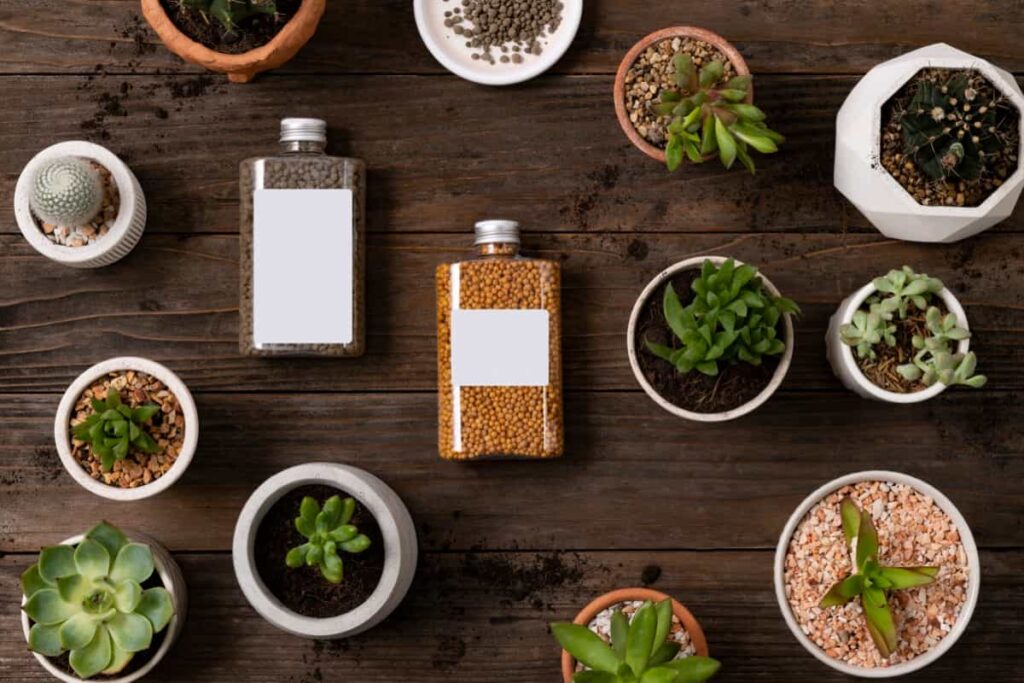
Excessive fertilization can harm your plants as much as insufficient fertilization. To avoid this, stick to the manufacturer’s recommendations and adjust the dosage according to your plants’ condition. Finally, if you’re still encountering issues, consulting with a local nursery or gardening expert is always a good idea. They offer customized guidance for your indoor garden’s unique conditions, aiding in fertilizer-related issues and enhancing plant health and vibrancy.
Fertilizater Schedule Chart/Calendar for Indoor Plants
| Plant Type | Spring | Summer | Fall | Winter | Recommended N-P-K Ratio | Special Instructions |
| Ferns | Once a month | Every 3 weeks | Once a month | Every 6 weeks | 14-14-14 | Use a slow-release organic fertilizer |
| Succulents | Once a month | Every 2-3 weeks | Once a month | Every 6-8 weeks | 10-10-10 | Dilute fertilizer to half-strength |
| Cacti | Every 6 weeks | Every 4 weeks | Every 6 weeks | Do not fertilize | 5-10-5 | Use cactus-specific fertilizer |
| Vegetables | Every 2 weeks | Every 2 weeks | Once a month | Every 6 weeks | 14-14-14 | Use a balanced liquid fertilizer |
| Fruits | Every 3 weeks | Every 2 weeks | Every 4 weeks | Every 6-8 weeks | 12-12-12 | Use a slow-release granular fertilizer |
| Flowers | Every 2-3 weeks | Every 2 weeks | Once a month | Every 6 weeks | 15-30-15 | Use flower-specific fertilizer |
| Herbs | Every 3 weeks | Every 2-3 weeks | Every 4 weeks | Every 6 weeks | 10-10-10 | Use organic or slow-release fertilizer |
In case you missed it: When to Start Seeds Indoors Chart: Zone Wise Calendar for Vegetables and Flowers
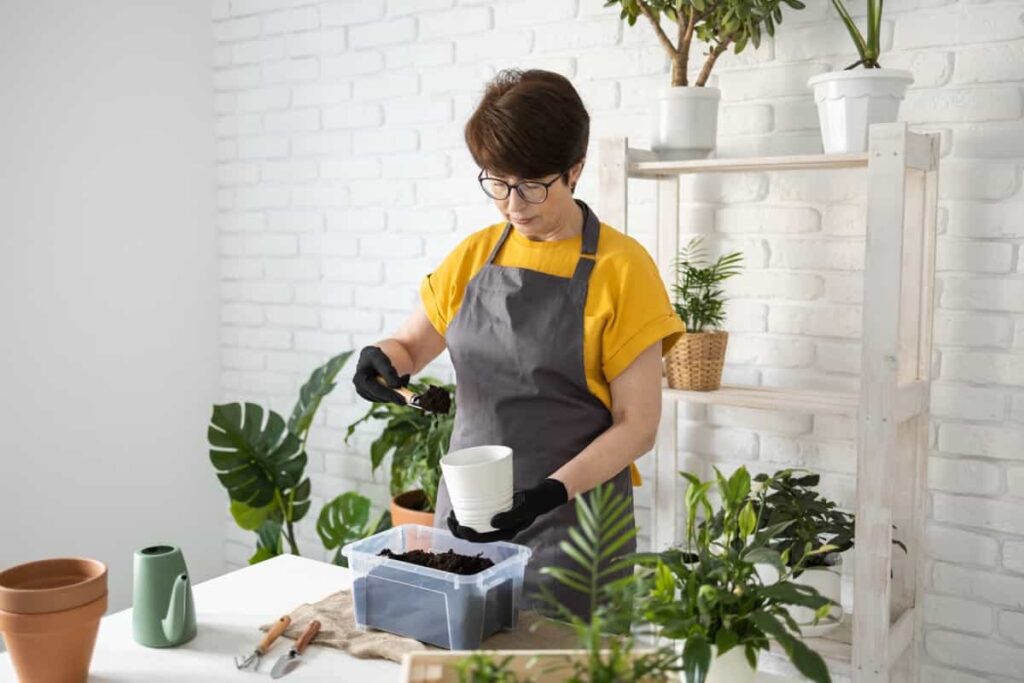
- The recommended N-P-K ratio may differ based on the specific plant species. Always check the plant’s specific needs.
- “Do not fertilize” means that the plant is likely dormant during that period and generally doesn’t require fertilization.
- Always follow the manufacturer’s guidelines on dosage and application methods.
Different Types of Fertilizers and their NPK ratios
| Fertilizer Type | Fertilizer Name | N-P-K Ratio | Notes |
| Organic | Compost | 1-1-1 | Nutrient values can vary; they are generally balanced. |
| Organic | Worm Castings | 1-0-0 | High in nitrogen, it also contains micronutrients. |
| Organic | Fish Emulsion | 5-1-1 | High in nitrogen; may have a strong odor. |
| Organic | Bone Meal | 3-15-0 | High in phosphorus; good for root development. |
| Organic | Bat Guano | 10-3-1 | High in nitrogen and also has some phosphorus. |
| Inorganic | Urea | 46-0-0 | Extremely high in nitrogen; use cautiously. |
| Inorganic | Triple Superphosphate | 0-46-0 | Very high in phosphorus. |
| Inorganic | Muriate of Potash | 0-0-60 | High in potassium, also called Potassium Chloride. |
| Homemade | Coffee Grounds | 2-0.3-0.2 | Provides nitrogen; slightly acidic. |
| Homemade | Eggshells | 1.2-0.4-0.1 | Provides calcium; crush before using. |
| Natural | Wood Ash | 0-1-3 | High in potassium; alkaline, so use sparingly. |
| Natural | Seaweed Extract | 1-0-4 | High in potassium, it also contains trace minerals. |
In case you missed it: Best Organic Fertilizers to Feed Indoor Plants: Homemade and Natural Recipes
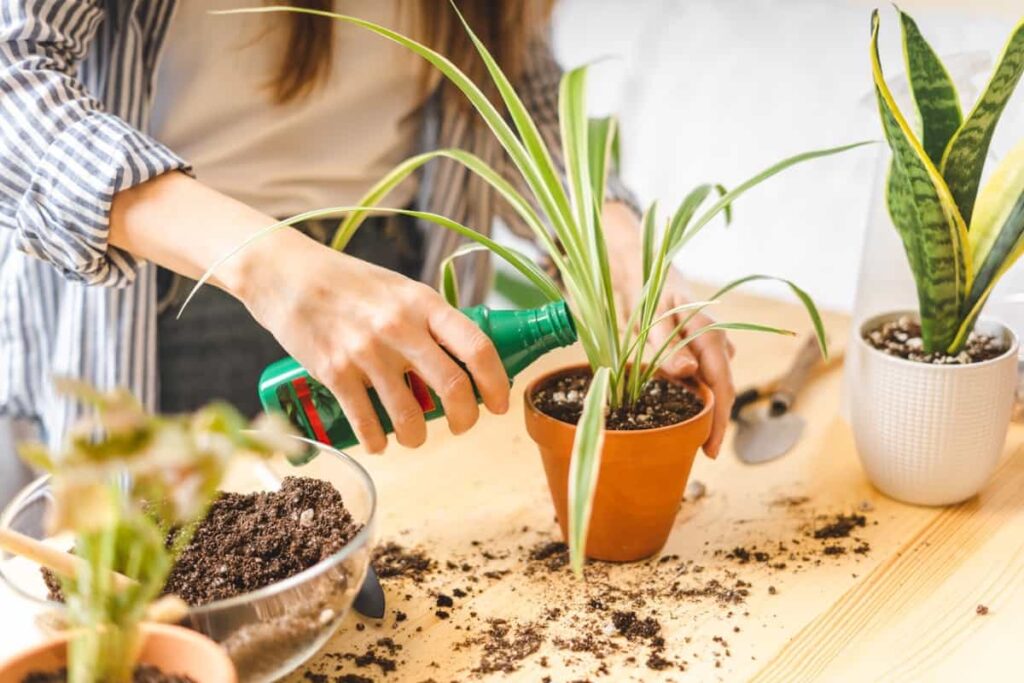
Conclusion: The Importance of Fertilizing Indoor Plants
Fertilizing indoor plants is not just an optional step in plant care; it’s necessary to maintain a healthy indoor garden. From promoting robust growth and vibrant blooms to enhancing soil structure and fertility, the right fertilization routine can significantly improve the well-being of your plants.
Be it homemade fertilizers like compost tea and worm castings or specialized ones for different plant species like ferns, cacti, orchids, choosing the right fertilizer and applying it correctly can make all the difference in your indoor gardening journey. However, it’s crucial to approach fertilization with care and knowledge. Over-fertilizing can lead to problems, from burned roots and nutrient imbalances to increased susceptibility to pests and diseases.
That’s why it’s essential to pay attention to the specific needs of your plants, adjust your fertilization schedule according to seasons, and consult with experts when in doubt. A balanced and thoughtful approach to fertilization will keep your plants healthy and make your indoor gardening experience more rewarding.
- Management Pests and Diseases in Your Cotton Field
- Sheep Farming Business Plan for Beginners
- Aquaponic Farming at Home: A Step-By-Step Guide
- Profitable Village Farming Business Ideas in 2024
- High-Yield Aquaculture: Fast-Growing Fish for Farming
- Effective Fish Pond Construction Techniques for Beginners
- Irrigation and Water Management in Pineapple Farming
- Blossom to Harvest: Mastering Flowering and Pollination in Papaya Farming
- Pig Fattening Essentials: From Selection to Sale for Beginners
- Raising Wagyu Cattle: A Complete Guide for Premium Beef Production
- Soil Types and Their Water Holding Capacity
- Optimizing Irrigation Schedules for Coconut Groves for Enhanced Yield
- Espresso Your Garden: Coffee Grounds for Healthier Acid-Loving Plants
- The Best Soil Mix for Snake Plants: How to Mix Your Own Snake Plant Soil
- Green Thumb Success: Expert Tips for Cultivating Greenhouse Beans All Year Round
- Bloom All Year Round: The Ultimate Guide to Indoor Hyacinth Care
- Eco-Friendly Gardening: How to Make Liquid Fertilizer from Kitchen Waste
- Ultimate Guide to Grow Anise in Pots: Explore Seed Propagation to Harvesting
- Guide to Raising Chester White Pigs: Discover Breed Facts to Growth Management
- Mastering the Elegance: The Ultimate Guide to Weeping Cherry Tree Care, Planting, and Maintenance
- Ultimate Guide to Planting Garlic in Grow Bags: Growing Strategies for Beginners
- How to Fix Spider Plant Leaf-Related Problems: Natural and Organic Remedies
- 10 Reasons Why Your Tulsi Plant is Shedding Leaves: Home Remedies and Solutions
- Optimizing Growth and Yield: The Advantages of Palm Bunch Ash Fertilizer
- Utilizing Neem Oil Extract as a Natural Pesticide for Hydrangea
- From Soil to Harvest: Various Ways in Which Farmers Can Use AI Tools
- Steps to Encourage and Induce Citrus Flowers: A Comprehensive Guide
- How to Fix Snake Plant Leaf-Related Issues: Natural and Organic Remedies
- Transform Your Garden into a Fragrant Oasis with Raat Ki Rani (Night Blooming Jasmine)
- Discover the Ideal Chicken Breeds for Philippine Farms
- How to Create a Poultry Egg Farm Business Plan for Profits
- Grow Lemon Cucumbers Like a Pro: Insider Techniques for Bountiful Yields
- Ultimate Guide to Caring for Your Pink Princess Philodendron: Tips for Thriving Variegation
- Areca Nut Profit Per Acre: Calculating Yield and Cost of Cultivation
- How Kaveri Chicken is Becoming a More Profitable Breed in Indian Backyards
- Transform Your Barn: 9 Steps to Convert a Horse Stall into a Chicken Coop
